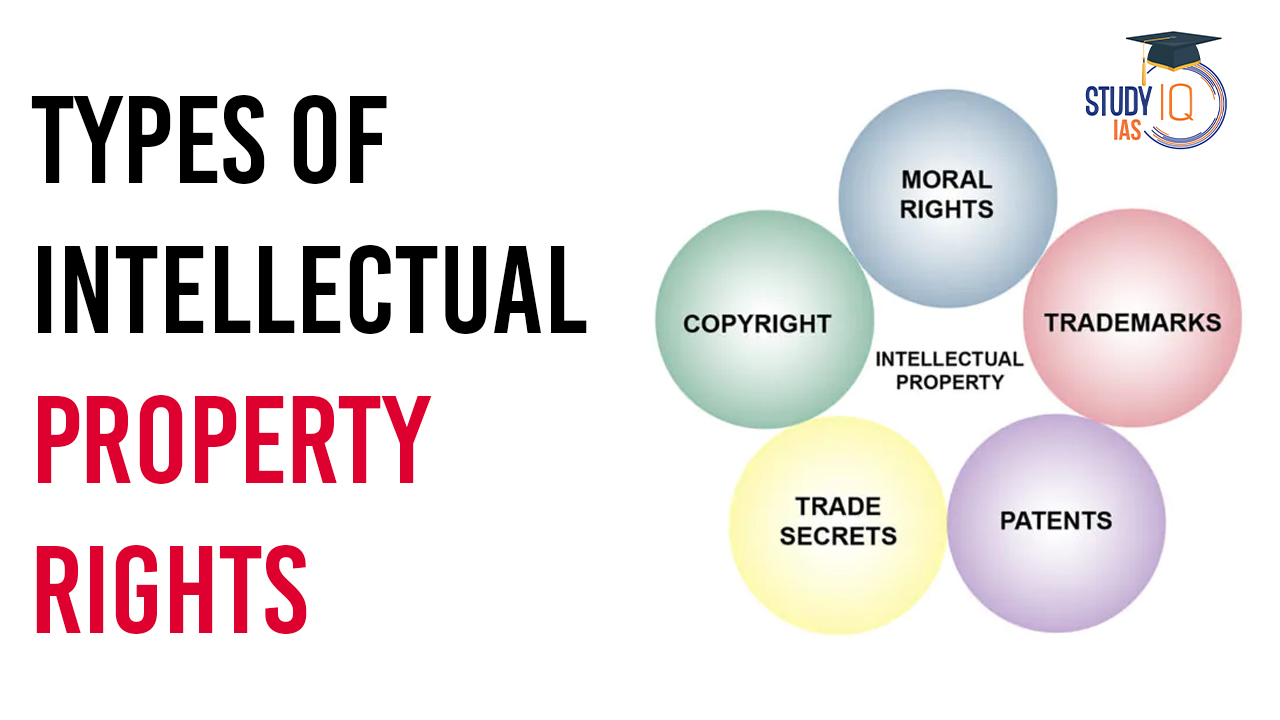Table of Contents
Intellectual Property Rights (IPR) grant creators exclusive control over their mental creations, ensuring exclusive usage for a specified period. Article 27 of the Universal Declaration of Human Rights establishes the right to safeguard moral and material interests stemming from scientific, literary, or artistic authorship. Initial acknowledgement of IPR’s significance occurred in the Paris Convention for the Protection of Industrial Property (1883) and the Berne Convention for the Protection of Literary and Artistic Works (1886), both administered by the World Intellectual Property Organization (WIPO).
We’re now on WhatsApp. Click to Join
What is Intellectual Property Rights (IPR)?
Intellectual Property Rights (IPR) bestow exclusive privileges upon creators for their intellectual creations, providing control for a specific duration. These encompass patents, safeguarding inventions; copyrights, protecting literary and artistic works; trademarks, ensuring brand identification; and trade secrets.
Article 27 of the Universal Declaration of Human Rights recognizes the entitlement to safeguard both moral and material interests arising from authorship. Seminal agreements like the Paris Convention for the Protection of Industrial Property (1883) and the Berne Convention for the Protection of Literary and Artistic Works (1886) acknowledge the significance of IPR. Administered by the World Intellectual Property Organization (WIPO), these rights play a pivotal role in fostering innovation, creativity, and economic development.
Types of Intellectual Property Rights
Copyright
- Description: Copyright protects the rights of creators over their literary and artistic works. This includes a broad spectrum of creations such as books, music, paintings, films, computer programs, databases, and technical drawings.
- Significance: Grants creators exclusive rights, fostering creativity and ensuring they control the use of their works.
Patents
- Description: A patent is an exclusive right granted for an invention. It allows the patent owner to decide how the invention is used by others. Certain inventions, like those harming public order, agriculture methods, and computer programs, cannot be patented.
- Significance: Encourages innovation by providing inventors with a monopoly for a specified period in exchange for disclosing technical information.
Trademark
- Description: Trademarks distinguish the goods or services of one enterprise from others. Traditionally, artisans market their products, and today, trademarks include symbols, names, or marks.
- Significance: Essential for brand identity, helping consumers make informed choices and fostering fair competition.
Industrial Property
- Description: Industrial property covers distinctive signs (trademarks and geographical indications) and innovations (inventions, industrial designs, and trade secrets). Trademarks and geographical indications aim to ensure fair competition, while inventions stimulate innovation and technology creation.
- Significance: Protects investments in technology development, stimulates innovation, and facilitates the transfer of technology through various means.
Geographical Indications
- Description: Geographical indications and appellations of origin identify goods with qualities attributable to their specific geographical origin. This includes the name of the place of origin of the goods.
- Significance: Preserves the reputation and characteristics associated with a specific geographic region, ensuring informed consumer choices.
Trade Secrets
- Description: Trade secrets protect confidential information such as business strategies, processes, or formulas. Unauthorized acquisition or use is considered an unfair practice and a violation of trade secret protection.
- Significance: Encourages companies to keep valuable information undisclosed, promoting fair competition and innovation.
| Intellectual Property Right | Description |
| Copyright | Protects literary and artistic works, including books, music, paintings, films, and computer programs. |
| Patents | Grants exclusive rights for inventions, allowing the patent owner to control how the invention is used by others. |
| Trademark | Distinguishes goods or services of one enterprise from others, including symbols, names, or marks. |
| Industrial Property | Covers distinctive signs (trademarks, geographical indications) and innovations (inventions, industrial designs, trade secrets). |
| Geographical Indications | Identifies goods with qualities linked to a specific geographical origin. |
| Trade Secrets | Protects confidential business information from unauthorized acquisition, use, or disclosure. |
Intellectual Property Rights UPSC
Intellectual Property Rights (IPR) grant exclusive control over mental creations, acknowledging the significance outlined in the Paris Convention and the Berne Convention. IPR encompasses patents for inventions, copyrights for literary and artistic works, trademarks for brand identification, and trade secrets. Administered by the World Intellectual Property Organization (WIPO), these rights play a crucial role in fostering innovation and economic development. Copyright protects a broad range of creations, patents incentivize invention disclosure, trademarks ensure brand identity, and trade secrets safeguard confidential information. Geographical indications link product qualities to specific origins. Collectively, these rights stimulate creativity, protect investments, and encourage fair competition.


 Mental Healthcare in India, Scope and Go...
Mental Healthcare in India, Scope and Go...
 Most Commonly Used Cancer Drugs and Thei...
Most Commonly Used Cancer Drugs and Thei...
 India Launched AI-Powered Traffic Manage...
India Launched AI-Powered Traffic Manage...





















